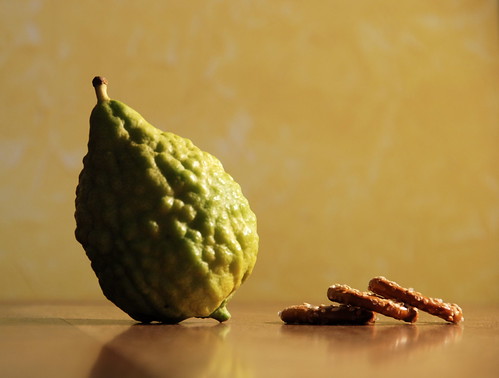Citron Odyssey
After Sukkot was over, I begged my mom to find some citron fruit in the village and make me some citron tincture following my explicit instruction. After a long search (there are only 2 families that grow these special trees in the village), she found one fruit and prepared the tincture. A week or so later, a basket with 10 more citrons awaited at her front porch. Some of which were used for candied citron peels.
The goods arrived here safely, and now the challenge is to figure out what to use it for. Originally, I wanted to create a Sukkot perfume. Without any clear idea of what that might be.
For now, I've used it in my first mod of the mandarin-sandalwood perfume. In the meantime, I also added some pomelo tincture I've made myself (this deserves an entry of its own). My only problem really is that sandalwood smells terrible on me in almost all forms so I'm going to recruit some volunteers for skin tests to see how it smells on more sandalwood-friendly skins. But these two sure give it a lift and make it more interesting than just tangerines and mandarins.
As far as the citron odyssey is progressing though - at least I've finally got closer to some. It is such a strange, intangible citrus though. So much more subtle than anything else. It's more similar to pomelo than anything else, almost velvety; and from all the citrus fruit, citron reminds me of quince more than anything else. It is not exactly sweet, nor sour. Perhaps salty is the closest flavour? Just like the one in the above photo and its preztel-y company.




